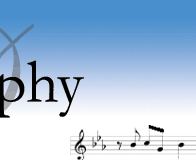


![]()
A STAR IS BORN - THE GREAT COMPOSER (PART 2)
Late in 1952 the final agreement required to make a musical of the 1937 screen classic A Star is Born was signed when Ira Gershwin consented to write the lyrics. It was Harold's first collaboration with Gershwin since they had written the score for Life Begins at 8:40 in 1934 (18 years). Judy Garland, who had been absent from film for 4 years, was to star in the film in hope that it would serve as a comeback vehicle for her. Since Judy Garland would do all of the singing, except for some incidental choral work, the songs were naturally projected with her in mind. Arlen and Gershwin knew they had to create a dramatic song for Judy Garland that allowed her to not only demonstrate her fine singing abilities, but also her flair for acting. The song that they created is The Man That Got Away.
It was during the work on this score in February 1953 that Harold's father, Cantor Samuel Arluck, died. Harold, deeply affected and distressed by his father's passing, forced himself to keep working. Always acknowledging his indebtedness to his father as his great musical influence, Harold tried to lessen the bitterness of his father's death by working even harder.
A Star is Born opened in New York at both the Paramount and Victoria
theaters in October 1954 and was hailed by the Times as "one of the
greatest heartbreak dramas that has drenched the screen
in years...." It further stated that the composers had given Miss
Garland six good songs - among them one unforgettable lump in the throat,
The Man That Got Away."
Harold had worked steadily since 1935 (except for the two years he himself decided to take off), but by 1953, he began to gravitate back toward New York. The far-from-stimulating atmosphere of the film capital, not to mention a steady stream of disappointing films, led to Arlen's decision to flee California for the fast paced New York.
 In
November 1953 he began his three-month stint on the songs for The Country
Girl, a film score he wrote with Ira Gershwin for stars Bing Crosby
and Grace Kelly. The same month it was announced that he was to compose
the music for House of Flowers, a musical with a Caribbean setting
based on a short story by Truman Capote. Never having met each other,
Arlen began work on the score with Capote while he was in Paris. The two
actually wrote the show's title song together over the phone. After three
months of long-distance collaboration, Arlen and Capote finally met in
New York in February 1954.
In
November 1953 he began his three-month stint on the songs for The Country
Girl, a film score he wrote with Ira Gershwin for stars Bing Crosby
and Grace Kelly. The same month it was announced that he was to compose
the music for House of Flowers, a musical with a Caribbean setting
based on a short story by Truman Capote. Never having met each other,
Arlen began work on the score with Capote while he was in Paris. The two
actually wrote the show's title song together over the phone. After three
months of long-distance collaboration, Arlen and Capote finally met in
New York in February 1954.
 It
was not long after their first meeting that Harold became seriously ill
with an ulcer. Arlen and Capote had completed three songs, House of
Flowers, I Never Has Seen Snow, and A Sleepin'
Bee and had begun work on Two Ladies in de Shade of de Banana
Tree when Harold was rushed to Doctor's Hospital for surgery.
Harold's ulcer was bleeding terribly, which caused him to lose volumes
of blood and required close to three dozen transfusions. Fortunately,
Harold managed to hang on and even insisted upon having Capote visit the
hospital so that they could continue to work on the show.
It
was not long after their first meeting that Harold became seriously ill
with an ulcer. Arlen and Capote had completed three songs, House of
Flowers, I Never Has Seen Snow, and A Sleepin'
Bee and had begun work on Two Ladies in de Shade of de Banana
Tree when Harold was rushed to Doctor's Hospital for surgery.
Harold's ulcer was bleeding terribly, which caused him to lose volumes
of blood and required close to three dozen transfusions. Fortunately,
Harold managed to hang on and even insisted upon having Capote visit the
hospital so that they could continue to work on the show.
House of Flowers, starring Pearl Bailey and Diahann Carroll, opened in December 1954 to mixed reviews. However, despite critical contradictions about the show, the score was voted the Critics' Award as the best of the year.
 In
1956, after a period of recording activity with Columbia, Capitol and
Walden Records, and a trip to Moscow with Ira Gershwin to attend the opening
of Porgy and Bess, Harold returned to Hollywood to work with E.Y.
Harburg on a film about Nellie Bly. Meanwhile, the two also began
In
1956, after a period of recording activity with Columbia, Capitol and
Walden Records, and a trip to Moscow with Ira Gershwin to attend the opening
of Porgy and Bess, Harold returned to Hollywood to work with E.Y.
Harburg on a film about Nellie Bly. Meanwhile, the two also began  work
on a musical entitled Jamaica, about a simple island boy whose
girl longed for the complexities of urban "civilization." Harold
asked famed Lena Horne, an old friend from his Cotton Club years, to star
in the show. She happily accepted and shortly after appeared on the Ed
Sullivan show and announced that she would appear in the Harold Arlen-Yip
Harburg musical. Within a few weeks the advance ticket sales reached close
to a million dollars. Arlen's work received much praise and the show ran
well over five-hundred performances.
work
on a musical entitled Jamaica, about a simple island boy whose
girl longed for the complexities of urban "civilization." Harold
asked famed Lena Horne, an old friend from his Cotton Club years, to star
in the show. She happily accepted and shortly after appeared on the Ed
Sullivan show and announced that she would appear in the Harold Arlen-Yip
Harburg musical. Within a few weeks the advance ticket sales reached close
to a million dollars. Arlen's work received much praise and the show ran
well over five-hundred performances.
 After
completing Jamaica, the Arlens left the cold of New York and returned
to California. Sadly, Harold didn't touch music for over a year while
mourning the loss of his mother, Celia Arluck, who died in 1956. He found
nothing to interest him, so he simply did no writing. Despite his heartache,
Harold experienced tremendous joy when his son, Samuel, was born on February
1, 1958.
After
completing Jamaica, the Arlens left the cold of New York and returned
to California. Sadly, Harold didn't touch music for over a year while
mourning the loss of his mother, Celia Arluck, who died in 1956. He found
nothing to interest him, so he simply did no writing. Despite his heartache,
Harold experienced tremendous joy when his son, Samuel, was born on February
1, 1958.
 Now
ready to start writing again, Harold began considering two possibilities:
a film score for a cartoon version of A Christmas Carol and a stage
work called Saratoga. Harold chose to do the musical with lyricist
Johnny Mercer. Saratoga was a mistake from inception because of
its ponderous story and unsympathetic characters, among other things.
The show failed after only eighty performances. Harold, having been of
ill health for some time and even hospitalized before the show previewed,
was too weak to attend its opening night. Despite his poor health, the
highly regarded musician continued to compose.
Now
ready to start writing again, Harold began considering two possibilities:
a film score for a cartoon version of A Christmas Carol and a stage
work called Saratoga. Harold chose to do the musical with lyricist
Johnny Mercer. Saratoga was a mistake from inception because of
its ponderous story and unsympathetic characters, among other things.
The show failed after only eighty performances. Harold, having been of
ill health for some time and even hospitalized before the show previewed,
was too weak to attend its opening night. Despite his poor health, the
highly regarded musician continued to compose.
< Previous | Top | Next >